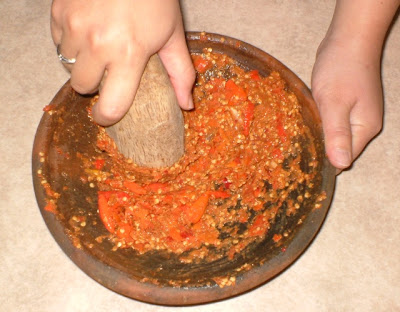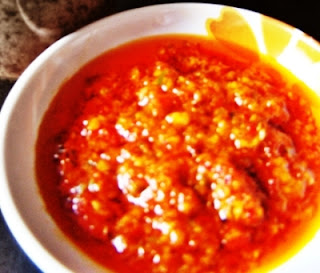Pandan leaves are the leaves of the plant Pandanus amaryllifolius. It is an aromatic member of the pandanus family, also sometimes referred to as screwpine. These fragrant, long, thin, green leaves are popular in
The leaves are used either fresh or wilted, and are commercially available in frozen form in Asian grocery stores in nations where the plant does not grow. They have a nutty, botanical fragrance which enhances the flavor of Indonesian, Singaporean, Filipino, Malaysian, Thai, Bangladeshi, Vietnamese and Burmese foods, especially rice dishes and cakes.
Sensory Quality
The scent of pandanus leaves develops only on wilting; the fresh, intact plants hardly have any odour. On the other hand, dried pandanus leaves loses their fragrance quite quickly.
It is also interesting to note that P. amaryllifolius is the only Pandanus species with fragrant leaves. Taken together, these signs, together with the lack of a wild population and the large distribution, imply a long tradition of cultivation.
Nutritional and Medicinal Properties
Pandanus leaves are thought by Asians to have a ‘cooling’ effect on the body and believed to be good for treating bleeding gums, internal inflammation, colds and coughs. The leaves have another interesting application - they are commonly used as insect repellents in
Culinary uses
Pandan leaves are traditionally used to flavor rice, curries, milk puddings, and ice-cream. In
To use for flavoring, several leaves (fresh or dried) are rolled and tied together and placed in the saucepan when boiling rice, milk, etc. The leaves are removed at the end of cooking. A very strong decoction is made by simmering chopped leaves in a small amount of water, which is strained and used to flavor dishes. Try wrapping pandan leaves around fish before roasting. A popular sweets dish is made with coconut milk, rice and pandan leaves for flavor. It is a plant that people of many Asian cultures yearn after. Grow a pandan and experience the aroma and culinary delight.
In Indonesia, pandan leaves are used for dishes, cakes and desserts and here are some examples:
Dishes:
Nasi Uduk (Coconut Rice)
Nasi Tumpeng (Festive Yellow Rice)
Pandan Coconut Mouse Cake
Pandan Chiffon Cake
Kue Putu Ayu
Sweet Desserts:
Dadar Gulung (Indonesian Crepes with Coconut Filling)
Kelepon (Sticky Rice Balls with Palm Sugar Filling)
Serabi (Indonesian Pancake)
Es Cendol (Ice-blended flour noodles in coconut milk)
Cendol Ice Cream
Other Names of Pandan
Pandan leaf is also known as:
kathey (Arabic)
ketaky (Bengali
chan heung lahn, chan xiang lan (Cantonese, Mandarin)
skrupalm (Danish)
pandan (Dutch)
pandanus (French)
schraubenpalme (German)
pandanus (Hebrew)
rampe (Hindi)
|pandanuz (Hungarian)
daun pandan (Indonesian, Malaysian)pandano (Italian)
takonoki (Japanese)
taey (Khmer)
tay ban (Laotian)
skrupalme (Norwegian)
pandano (Portuguese)
rampe (Singhalese)
pandano (Spanish)
skruvpalm (Swedish)
thazhai (Tamil)
bai toey hom (Thai)
cay com nep (Vietnamese)
References:
- Wikipedia/ Wikimedia
- Epicentre
- herbsarespecial.com
- buzzle.com
- All pictures are 'borrowed' from Google Images














































